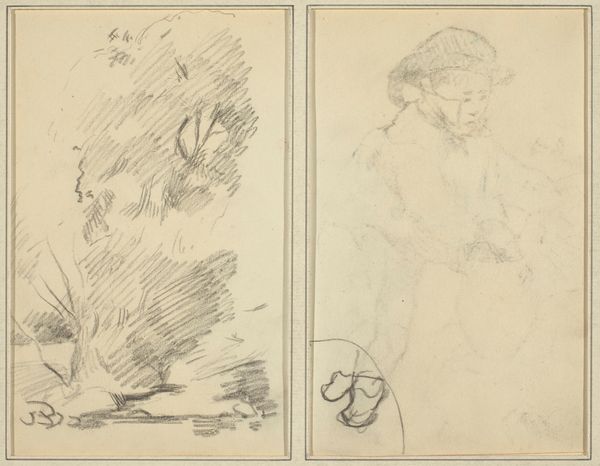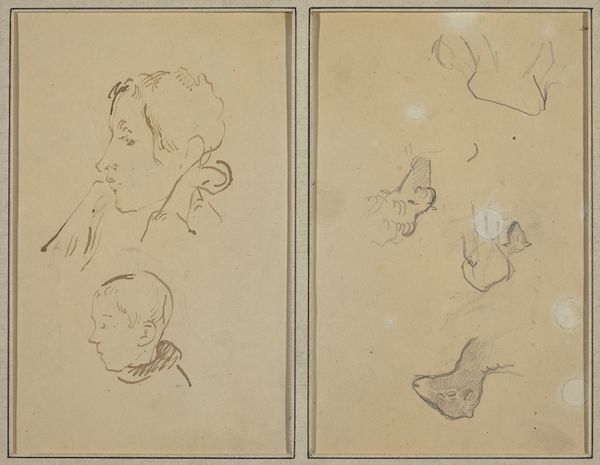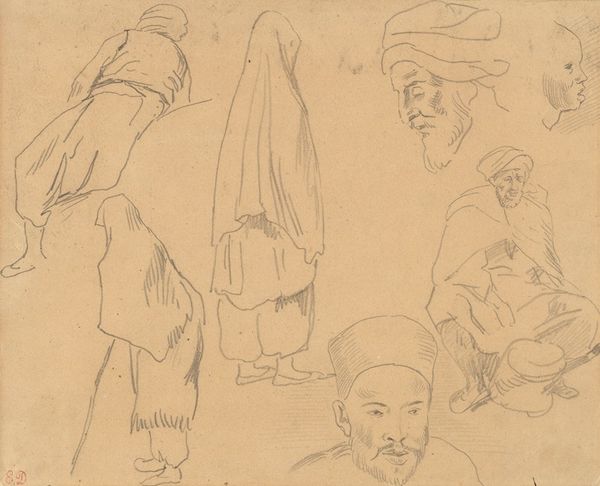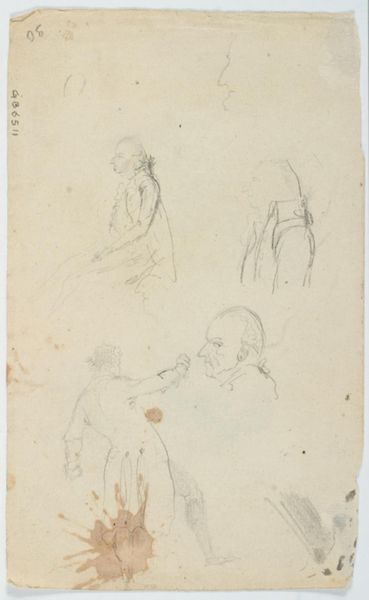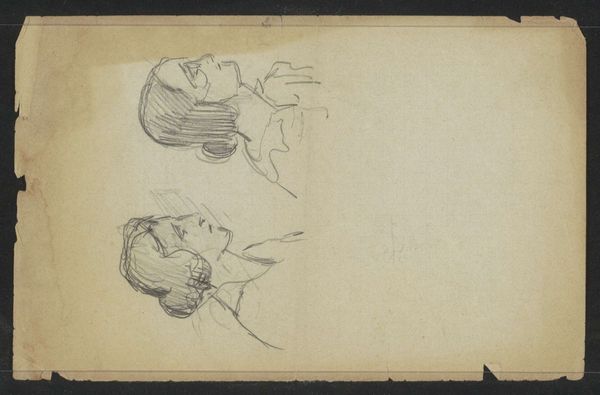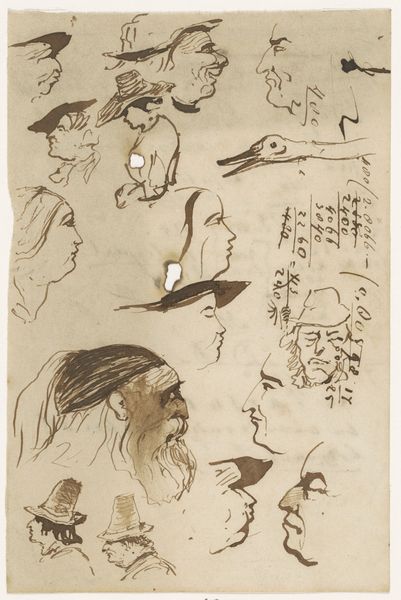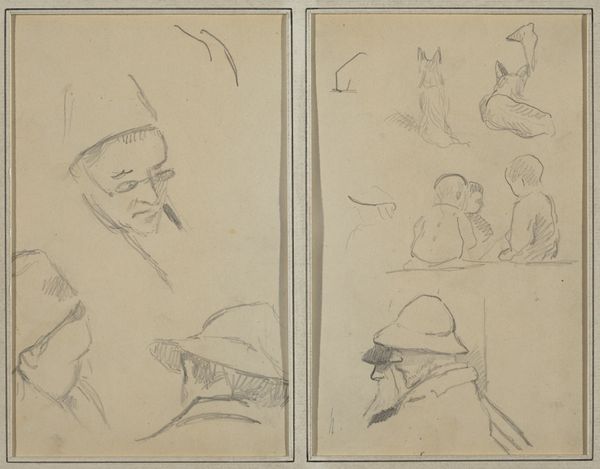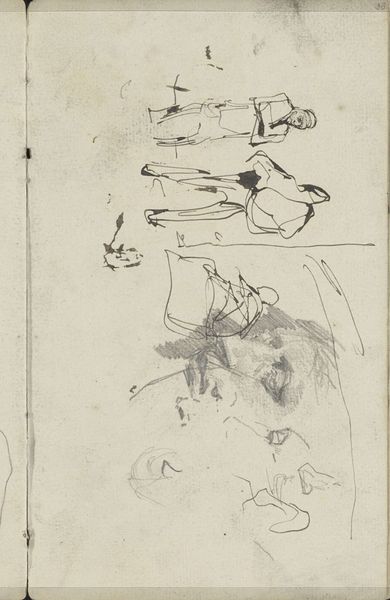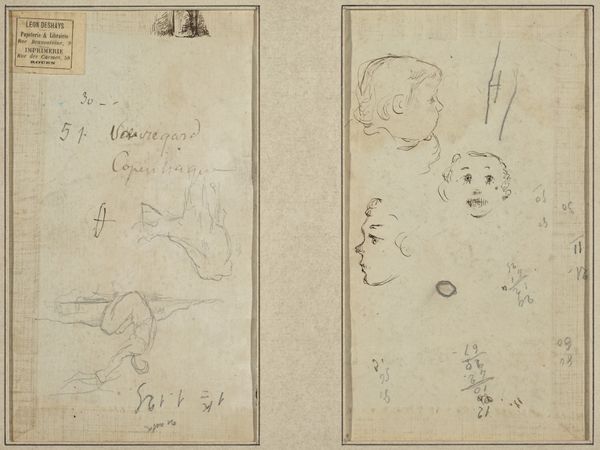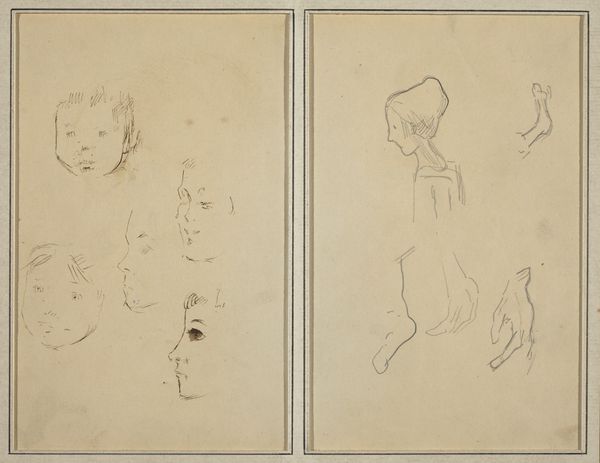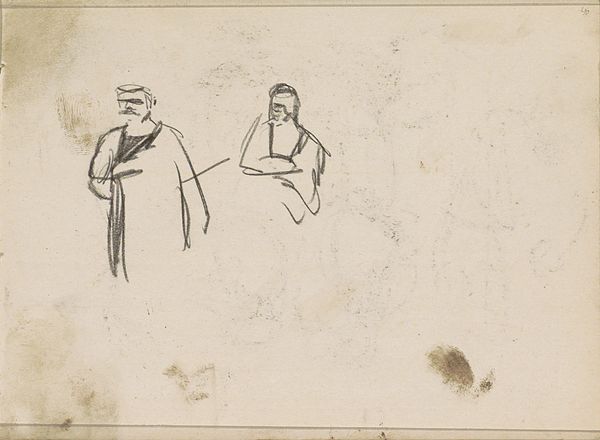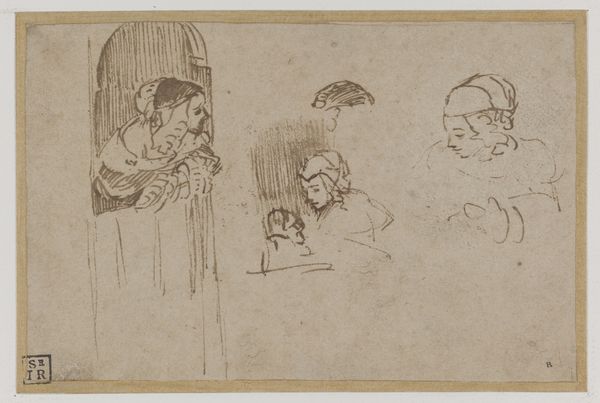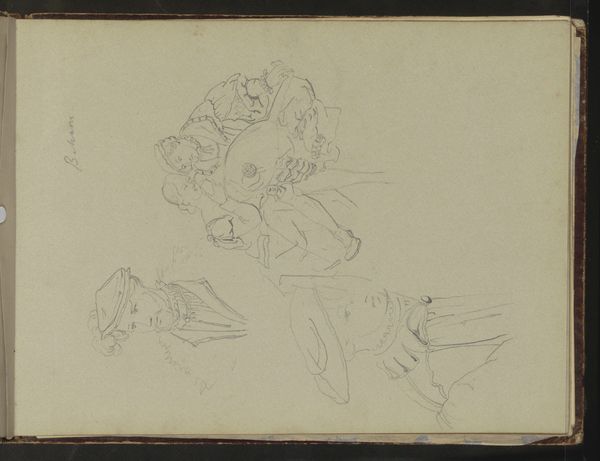![Five Sheep; Head of a Woman and Head of a Bearded Man [recto] by Paul Gauguin](/_next/image?url=https%3A%2F%2Fd2w8kbdekdi1gv.cloudfront.net%2FeyJidWNrZXQiOiAiYXJ0ZXJhLWltYWdlcy1idWNrZXQiLCAia2V5IjogImFydHdvcmtzL2E3ZjkxNGY2LWU5MjQtNDM0Ni1iOGU1LWY2YWFkMmQxZjJhMS9hN2Y5MTRmNi1lOTI0LTQzNDYtYjhlNS1mNmFhZDJkMWYyYTFfZnVsbC5qcGciLCAiZWRpdHMiOiB7InJlc2l6ZSI6IHsid2lkdGgiOiAxOTIwLCAiaGVpZ2h0IjogMTkyMCwgImZpdCI6ICJpbnNpZGUifX19&w=3840&q=75)
Five Sheep; Head of a Woman and Head of a Bearded Man [recto] 1884 - 1888
0:00
0:00
drawing, ink, pencil
#
portrait
#
drawing
#
pencil sketch
#
landscape
#
figuration
#
ink
#
pencil
#
post-impressionism
Dimensions: overall: 16.9 x 22.6 cm (6 5/8 x 8 7/8 in.)
Copyright: National Gallery of Art: CC0 1.0
Curator: Before us is a drawing by Paul Gauguin, likely dating between 1884 and 1888. It’s titled "Five Sheep; Head of a Woman and Head of a Bearded Man [recto]", and seems to be rendered in pencil and ink. Editor: My initial impression is one of intimacy and observation, like capturing fleeting moments. The composition feels fragmented, almost dreamlike, and creates a strange visual tension between the rural and the personal. Curator: Indeed. Gauguin, moving through the Impressionist circle, increasingly sought to challenge academic artistic conventions. This particular drawing displays a shift toward his post-impressionistic style. I wonder how we might contextualize these fragmented scenes within a broader narrative of his career. Editor: From a critical perspective, I see how Gauguin, often through his association and eventual displacement into Tahitian life, represents an ongoing problematic trope that relies on primitivism, even here in an earlier work that prefigures this trajectory. Can the portraits tell a story that complicates that perspective, adding more texture? Curator: That's insightful. The recto presents three quick sketches of sheep, seemingly at rest. On the same plane, he renders two portraits, offering a study of the human form. It hints at a deeper examination of rural life and society that speaks to labor, identity, and his perception of Breton peasants. Editor: Absolutely, but the portraits also exist in a historical context. The artistic value of the peasant subject really rose in the late 19th century, partly romanticizing their existence even while, due to the ongoing agricultural crises, rural peoples lived difficult, inequitable lives. We might consider what political implications Gauguin inadvertently or intentionally participates in when choosing such subject matter. Curator: Right. Considering this work alongside others created during the same period in Brittany opens discussions regarding art’s function within rural socio-economic systems. Gauguin later left France entirely. Perhaps we should interpret these drawings not as documents of existing realities, but of his desires and eventual disillusions, making that primitivism less simple. Editor: Agreed. Gauguin, particularly with images like these, acts as an aperture into complex interactions between social class, politics, and artmaking. There is tension—both captured and ongoing—in this arrangement of the rural and the portraiture. Curator: Examining the institutional validation of this work through different historical lenses reveals its capacity for multi-layered conversations on class and visual representation.
Comments
No comments
Be the first to comment and join the conversation on the ultimate creative platform.

